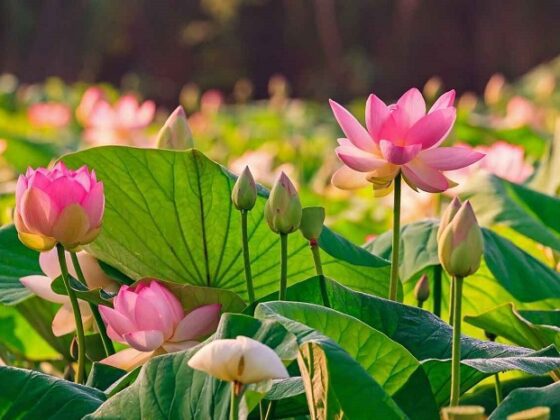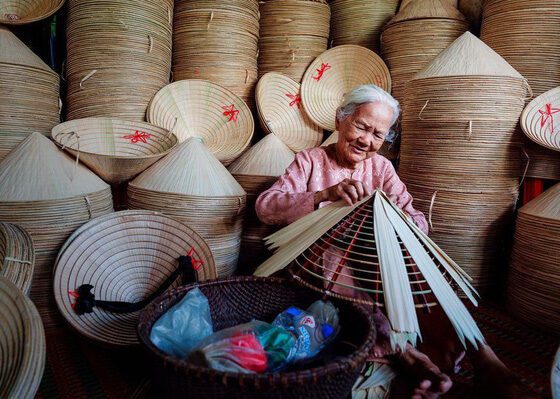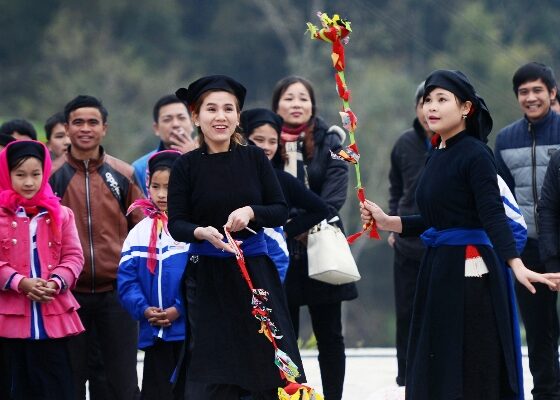Table of Contents Show
✍️ AI is summarizing:
Vietnamese calligraphy is a cherished art form that beautifully illustrates the depth of the Vietnamese language and culture. This traditional practice, known as Thư Pháp, involves the graceful strokes of brush and ink, often featuring poetic verses, proverbs, and heartfelt phrases. With deep historical roots influenced by Chinese writing systems, Vietnamese calligraphy has developed its own unique style, reflecting the essence of the nation.
Read more interesting posts:
- The Ao Dai: A Timeless Symbol of Vietnamese Culture & Traditional Dress
- The Art of Vietnamese Pottery: A Timeless Tradition in Bat Trang Village
- A Guide to Bac Ha Market: Vietnam’s Most Colorful Sunday Market
The cultural importance of Vietnamese calligraphy
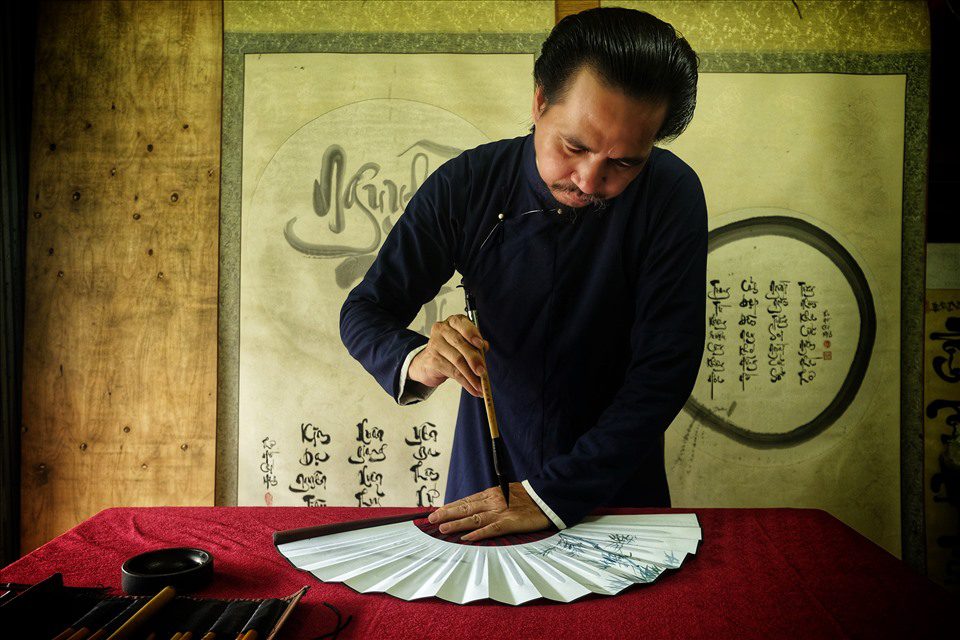
Calligraphy holds a special place in Vietnamese culture, particularly during Tết (Lunar New Year). During this festive season, intricately crafted characters are displayed as decorations and gifts, conveying wishes for prosperity, health, and happiness. These artistic creations add a personal touch to the celebrations, transforming words into meaningful expressions of goodwill. Vietnamese calligraphy is not just visually appealing; it embodies the values and philosophies that shape the culture, making it a vital part of communal life.
Mastering the craft of Vietnamese calligraphy
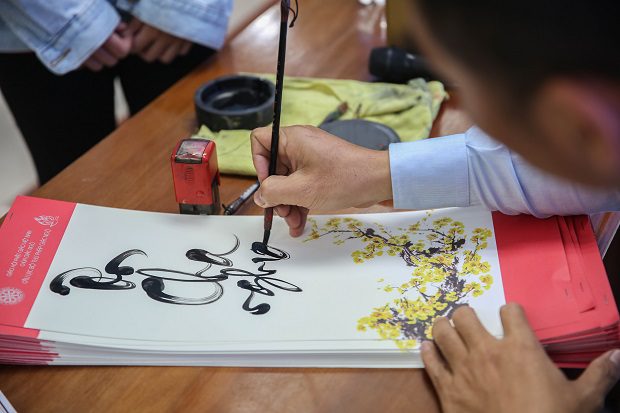
Many calligraphers dedicate years to mastering the craft of Vietnamese calligraphy, honing the fluid movements needed to create elegant strokes. This process is as much meditative as it is artistic, allowing these skilled artists to connect deeply with their thoughts and emotions. Each stroke tells a story, and every character is imbued with meaning, resonating with those who view it.
The art of Vietnamese calligraphy is frequently showcased at exhibitions and cultural events, celebrating its significance in Vietnamese heritage. These gatherings not only highlight the beauty of the art but also foster a sense of community, inviting people to appreciate the cultural narratives woven into each piece.
The modern renaissance of Vietnamese Calligraphy
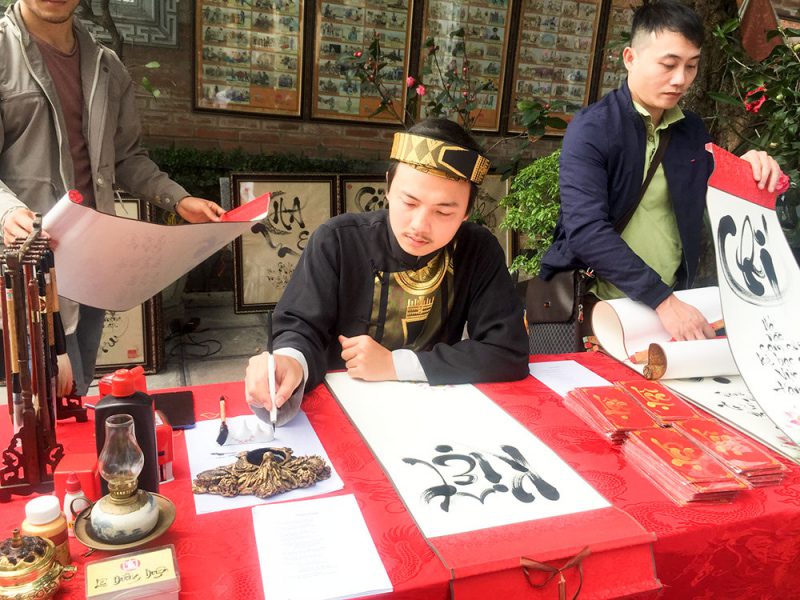
In contemporary Vietnam, calligraphy continues to thrive, seamlessly blending traditional techniques with modern interpretations. Artists are exploring new forms and styles, ensuring that this ancient craft remains relevant to younger generations. Whether it’s through digital art or innovative installations, the spirit of Vietnamese calligraphy is being reimagined while still honouring its rich history.
This artistic evolution serves as a bridge between the past and present, connecting generations through the shared beauty of written language. Calligraphy can be found in homes, adorning walls as decorative art, or given as thoughtful gifts. Each piece carries with it a sense of cultural pride, showcasing the artistry and creativity inherent in Vietnamese culture.
The enduring legacy of Vietnamese calligraphy
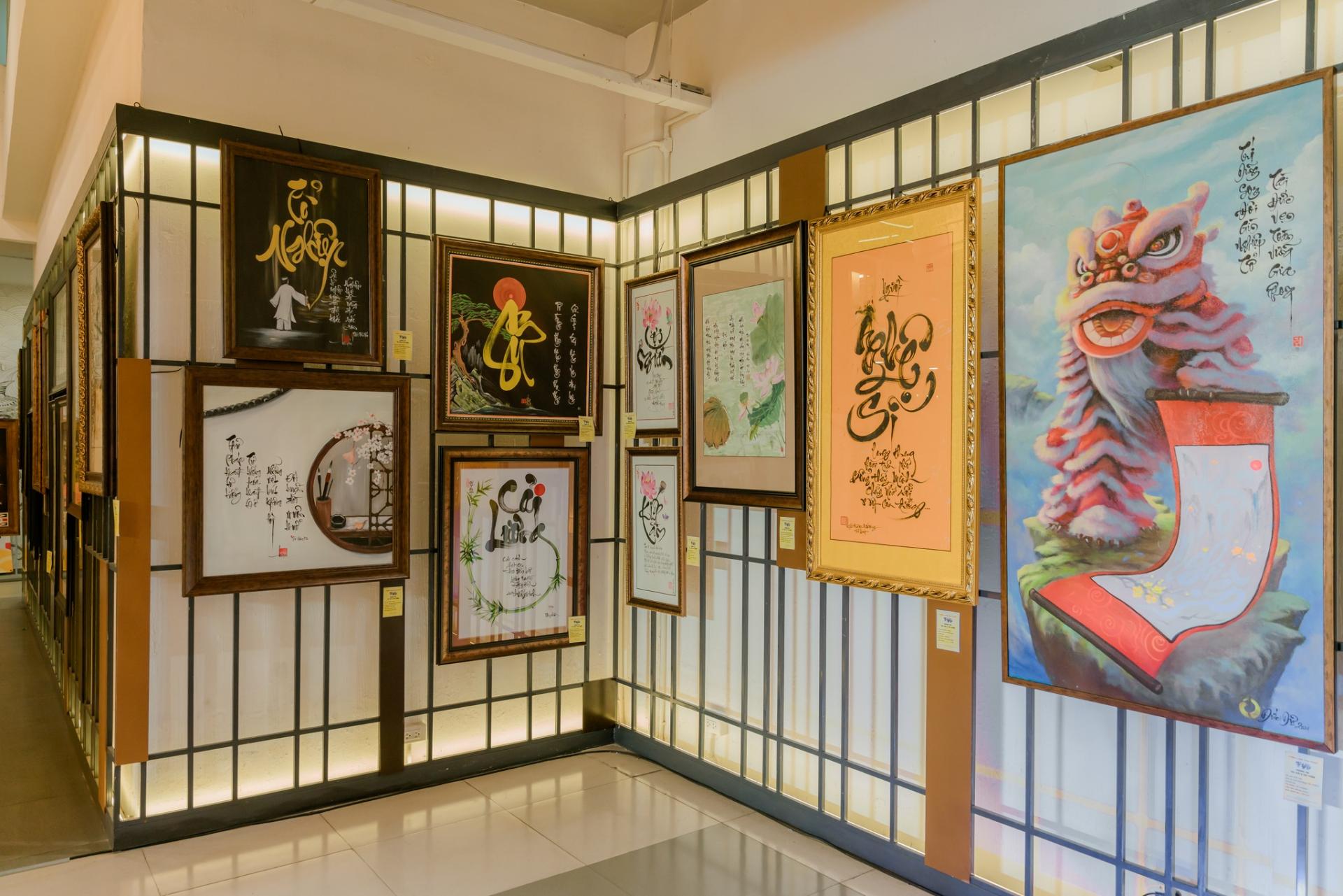
Vietnamese calligraphy remains a powerful symbol of artistic expression and cultural identity. It invites us to slow down and appreciate the beauty that can be found in simplicity and intention. In a fast-paced world, the act of writing with a brush serves as a reminder of the importance of mindfulness and the connections we share through our words.
As you explore Vietnam, take a moment to admire the intricate beauty of calligraphy. Whether displayed in a bustling market or a quiet home, these works of art tell the stories of a rich culture and the enduring spirit of its people. Vietnamese calligraphy is not just an art form; it is a celebration of language, heritage, and the profound connections that bind us all.
Conclusion
In conclusion, Vietnamese calligraphy, or Thư Pháp, is more than just artistic writing; it is the soul of Vietnamese culture rendered in ink. From the sacred wishes exchanged during Tết to its modern interpretations in contemporary art, it serves as a powerful bridge between generations. This timeless tradition captures the essence of Vietnam’s philosophies, history, and aesthetic beauty in every graceful stroke, remaining a vibrant and cherished art form for all to appreciate.
To discover more about Vietnam’s rich cultural traditions, join our community on the ExoTrails Vietnam Facebook group and follow the ExoTrails Fanpage!
FAQs
What is Vietnamese calligraphy called?
Vietnamese calligraphy is called “Thư Pháp.” This term refers to the traditional art of writing characters beautifully with a brush and ink.
Why is calligraphy important during Tết?
During Tết, calligraphy is used to create scrolls with wishes for luck, health, and prosperity. These are given as meaningful gifts and used as home decorations, making it a central part of the celebration.
What is the difference between Chinese and Vietnamese calligraphy?
While historically influenced by Chinese characters, Vietnamese calligraphy has evolved to use Chữ Nôm and, most notably, the modern Latin-based Quốc Ngữ script. This use of the Roman alphabet makes modern Thư Pháp visually unique and distinct.
What do Vietnamese calligraphy characters mean?
The characters often represent single, profound words like ‘Tâm’ (Heart/Mind), ‘Phúc’ (Happiness/Blessing), or ‘An’ (Peace). They can also be combined to form proverbs or poetic verses.
How do you become a calligraphy master?
Becoming a master requires years of dedicated practice to perfect brush control, stroke techniques, and a deep understanding of the characters’ spiritual meanings. It is a meditative discipline combining artistic skill with philosophical focus.
Where can I see traditional Vietnamese calligraphy?
You can see traditional calligraphy at temples, during Tết festivals on special “calligraphy streets,” and in art galleries across Vietnam. Cities like Hanoi and Ho Chi Minh City have dedicated areas where calligraphers work.



